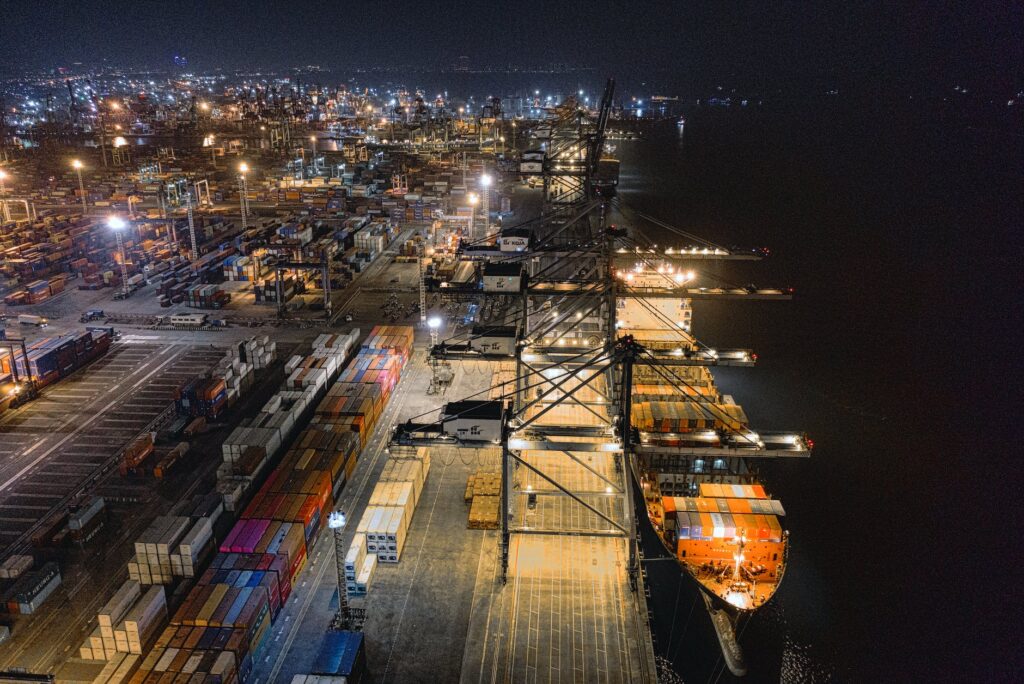Port automation is increasingly used and will become the norm for new port facilities. It reduces labour needs and costs, and has a high level of efficiency. Importantly, it is linked to automated transport, such as driver free vehicles:
Some key equipment in sea port automation are:
- Terminal Operating Systems (TOS): Automation in ports often begins with the implementation of Terminal Operating Systems. TOS is a software platform that integrates and manages various aspects of port operations, including vessel scheduling, container tracking, yard management, and equipment allocation. TOS enables real-time monitoring and optimization of port activities.
- Automated Container Handling Equipment: Ports are increasingly using automated container handling equipment to streamline operations. Automated Stacking Cranes (ASCs) and Automated Guided Vehicles (AGVs) are commonly employed for container stacking and transportation within the port yard. These machines are equipped with sensors, GPS, and computer systems to operate autonomously, reducing the need for manual intervention.
- Remote-Controlled Cranes: Ports are adopting remote-controlled cranes, which allow operators to control the crane’s movements and operations from a centralized control room. This eliminates the need for operators to physically sit in the crane cabin, increasing safety and efficiency.
- RFID and GPS Technologies: Radio Frequency Identification (RFID) and Global Positioning System (GPS) technologies play a crucial role in port automation. RFID tags on containers and equipment enable automatic identification and tracking, providing real-time information on their location and status. GPS systems are used for precise positioning and navigation of automated vehicles and equipment.
- Data Analytics and AI: Automation in ports leverages data analytics and artificial intelligence (AI) algorithms to optimize operations. By analyzing large volumes of data, including historical and real-time data on container movements, weather conditions, and traffic patterns, AI systems can make intelligent decisions to improve efficiency, reduce congestion, and minimize delays.
- Smart Port Infrastructure: Automation in ports also involves the development of smart infrastructure. This includes the deployment of sensors, cameras, and IoT devices to gather data and monitor various parameters such as container status, berth availability, and environmental conditions. Smart infrastructure enables real-time monitoring, predictive maintenance, and enhanced security.
- Integration and Connectivity: Sea port automation relies on the integration and connectivity of various systems and stakeholders. This includes seamless data exchange between shipping lines, customs authorities, trucking companies, and other relevant entities. Integration enables end-to-end visibility and streamlined coordination of port operations.
More PortSEurope news about port automation in the region
Copyright (C) Ports Europe. All Rights Reserved. 2023.

